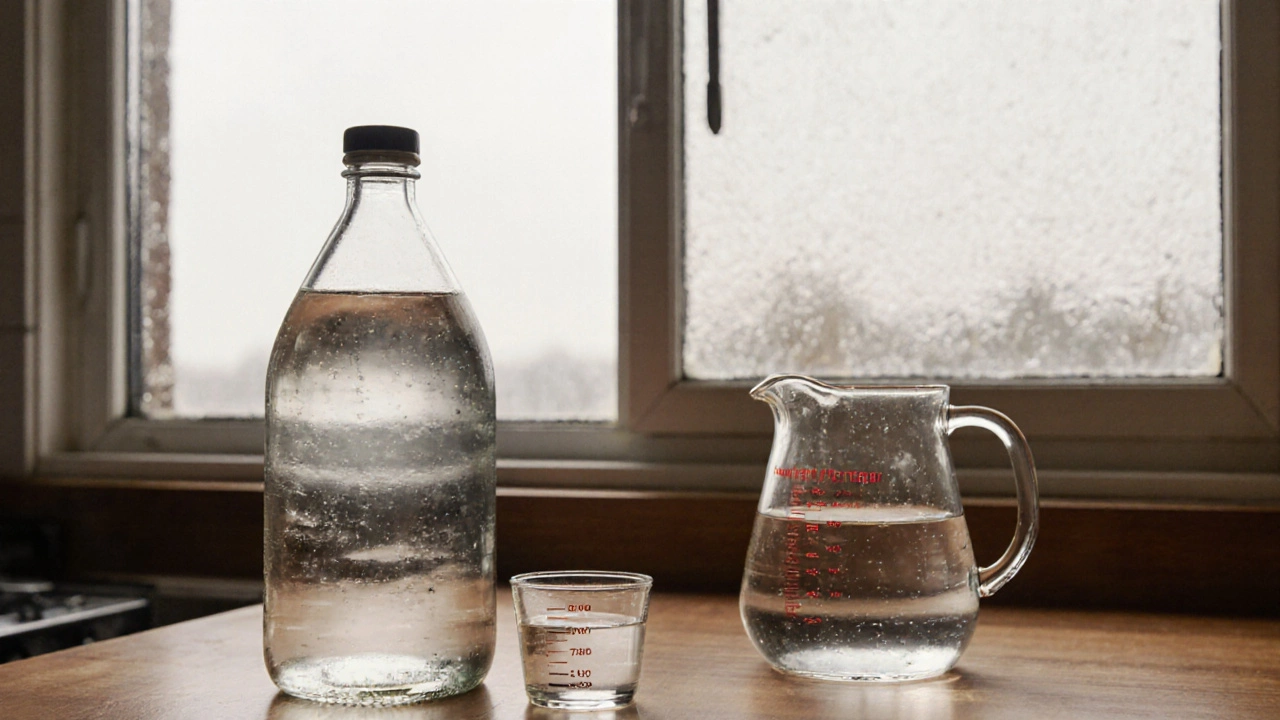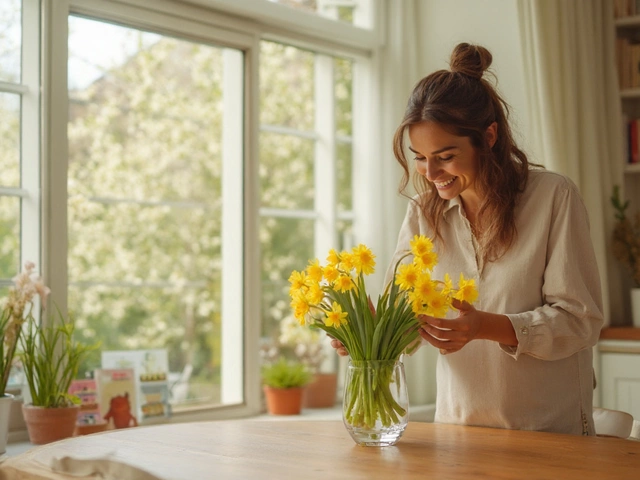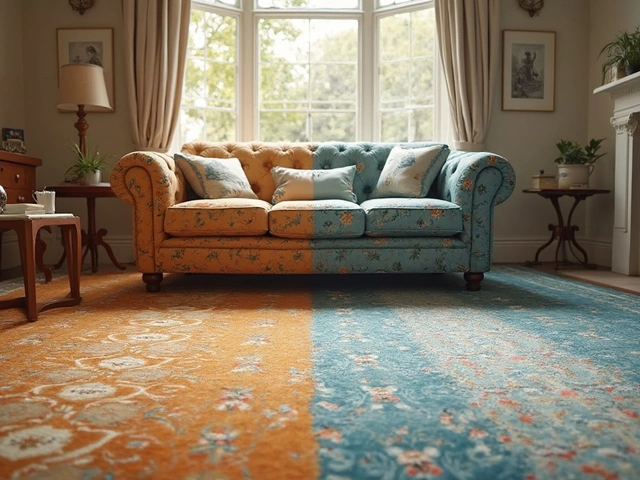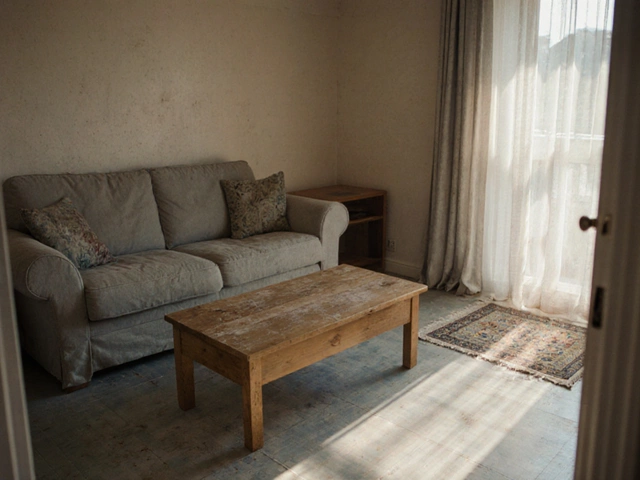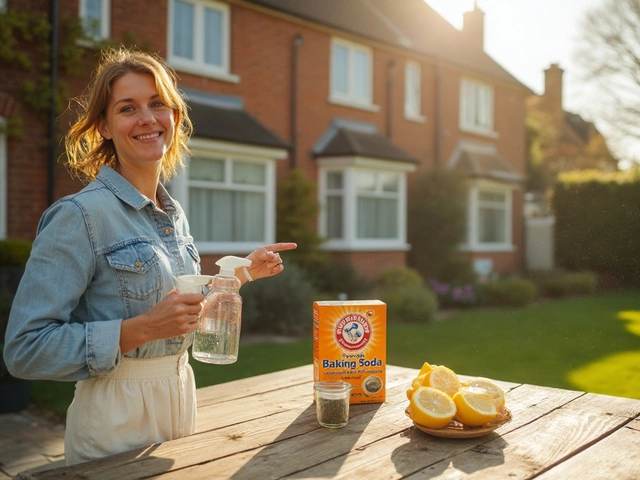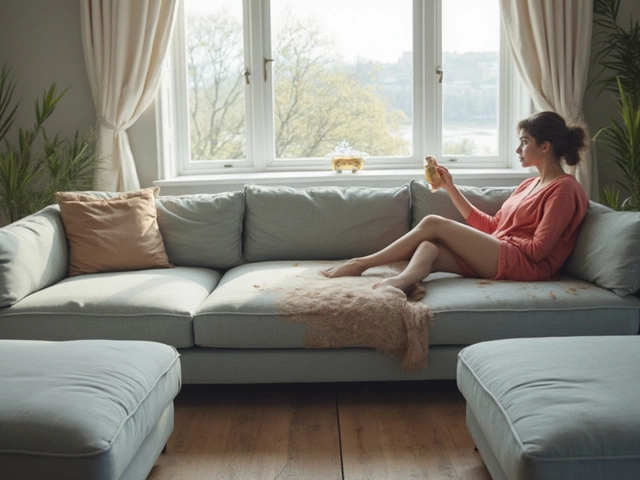Vinegar Window Cleaner Calculator
Enter your spray bottle size to get the correct vinegar and water measurements. Use distilled white vinegar for best results.
- Use 1 part vinegar to 3 parts water for standard cleaning
- For delicate coatings, use 1:4 ratio
- Always test on a small area first
Recommended ratio: 1 part vinegar to 3 parts water
When you stare at a smudged pane and wonder if a bottle of plain white vinegar can make it sparkle, you’re not alone. Many households reach for the pantry before the cupboard of pricey cleaners. Below is a step‑by‑step, no‑nonsense guide that shows exactly how to turn that kitchen staple into a reliable vinegar window cleaner and when it’s best to walk away.
Why Vinegar Works on Glass
Vinegar is a weak acid, typically 5‑6% acetic acid in water, that dissolves mineral deposits, grease, and soap scum without leaving a residue. Its low pH (around 2.5) breaks down the surface tension of water, allowing the solution to penetrate and lift dirt that would otherwise cling to the glass.
The same chemistry that makes it great for descaling kettles also tackles hard‑water spots on windows. Because it evaporates quickly, there’s less chance for streaks to form-provided you use the right technique.
Preparing Your Vinegar Solution
Mixing the solution correctly is crucial. Too much vinegar can etch delicate coatings on modern double‑glazed panes; too little, and you lose cleaning power.
- Use distilled white vinegar rather than apple cider or wine vinegar. The clear, low‑impurity version won’t leave a colored film.
- Combine 1 part vinegar with 3 parts lukewarm water. For a 1‑liter spray bottle, that’s 250ml vinegar and 750ml water.
- Add a few drops of dish soap if you’re dealing with greasy window frames or outdoor grime. The soap lowers surface tension further, improving spread.
- Shake the bottle gently to blend. Avoid vigorous shaking, which can create foam that clings to the cloth.
Applying the Solution - Step by Step
- Choose a cloudy day or work in the shade. Direct sunlight makes the solution dry too fast, causing streaks.
- Lay a clean microfiber cloth on a flat surface. Microfibers trap particles rather than pushing them around.
- Spray the vinegar mix generously onto the glass, covering the entire surface.
- Let it sit for 30‑60 seconds. This dwell time softens stubborn residue.
- Using a rubber squeegee, start at the top corner and pull down in a smooth, straight stroke. Wipe the squeegee blade with a clean cloth after each pass.
- For edges and frames, switch to a separate microfiber cloth. If you added dish soap, you may need to rinse the cloth with clean water to avoid streaks.
- Finish by polishing the glass with a dry microfiber towel in circular motions. This step buffs out any remaining water marks.
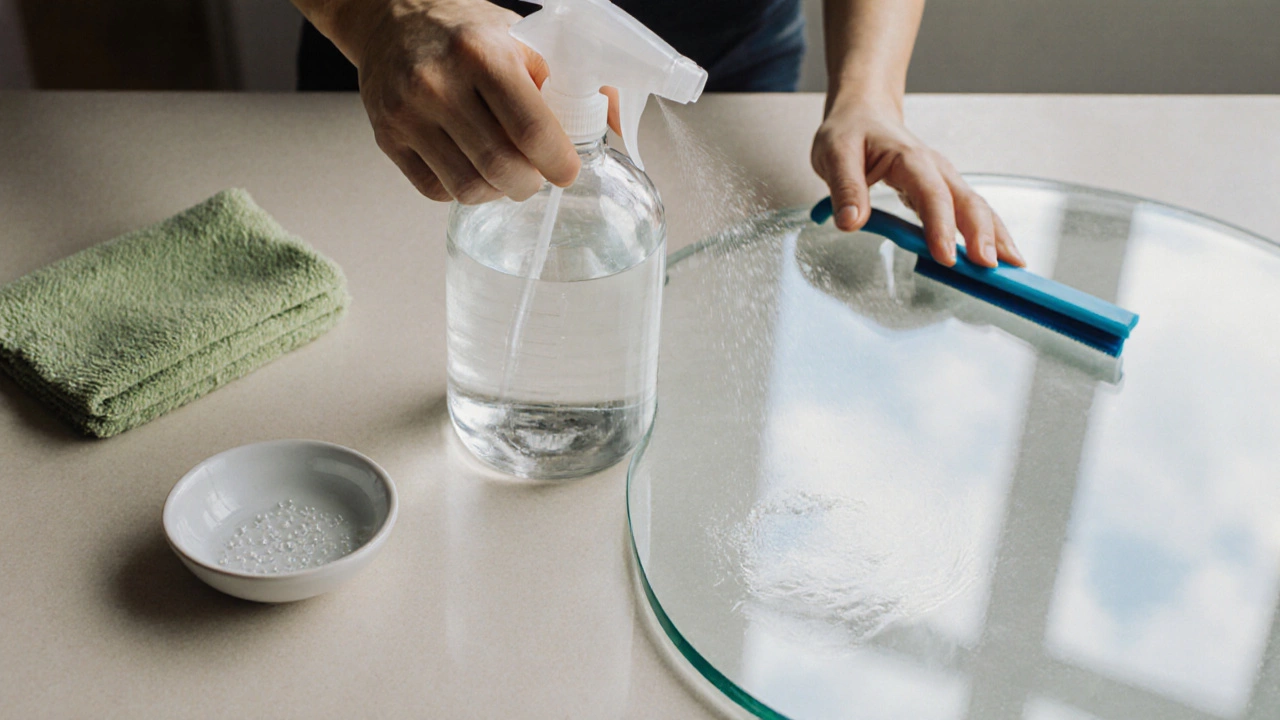
Pros and Cons Compared to Commercial Glass Cleaners
| Aspect | Vinegar Solution | Commercial Cleaner |
|---|---|---|
| Cost per litre | ~£0.30 | ~£3‑5 |
| Environmental impact | Biodegradable, low VOC | Often contains solvents, higher VOC |
| Streak‑free potential | High when used correctly | Varies; many contain surfactants that can streak |
| Safety on coatings | Safe on standard glass; avoid on low‑iron coated panes | Formulated for most coatings |
| Ease of preparation | Simple mix, no purchase needed | Ready‑to‑use |
Common Pitfalls and How to Avoid Them
- Streaks from sunlight: Always clean in shade or on overcast days.
- Residue on low‑iron glass: Dilute to 1:4 (vinegar:water) or skip vinegar entirely on such panes.
- Smell lingering: Add a few drops of essential oil (lemon or eucalyptus) to the mix.
- Etching on antique windows: Test on a small, hidden area first. If the surface feels rough after drying, discontinue use.
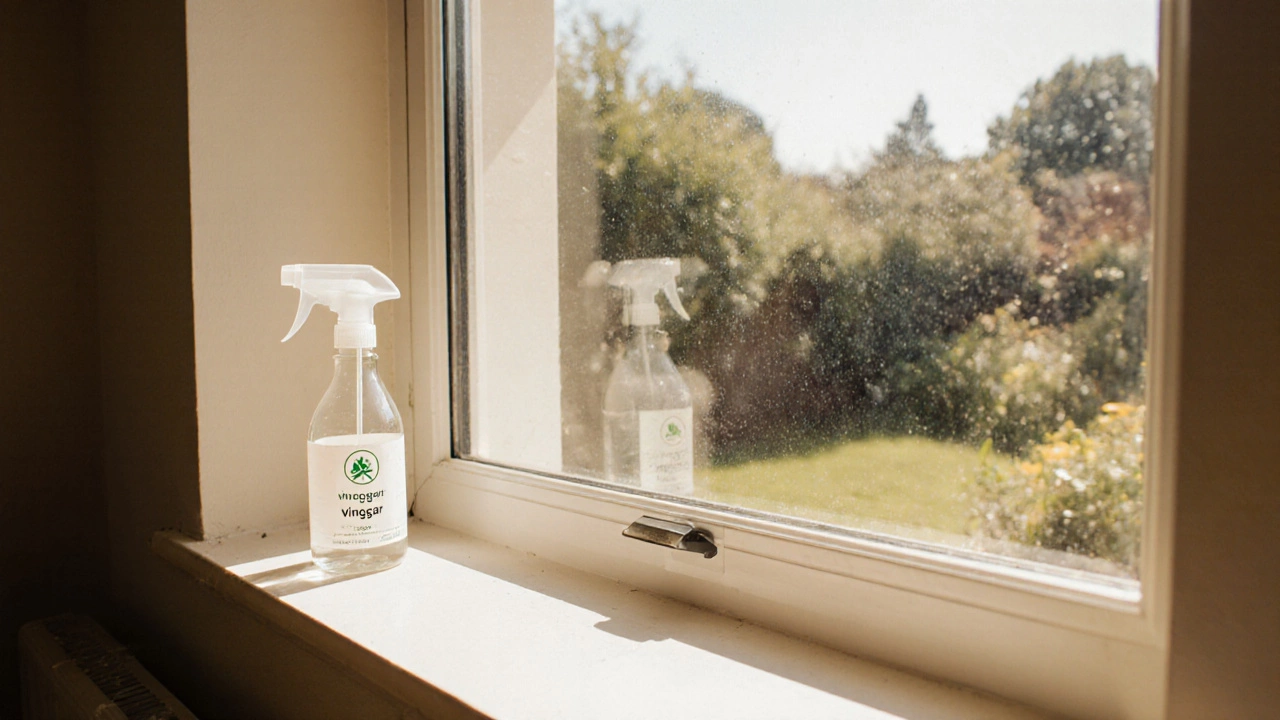
Alternative Natural Cleaners for Windows
If vinegar isn’t ideal for a particular situation, try one of these equally green options:
- Rubbing alcohol (isopropyl): Mix 1 part alcohol, 1 part water, and 1 tablespoon dish soap. Great for quick shine and evaporates fast.
- Citric acid solution: Dissolve 2tablespoons citric powder in 1litre warm water. Works well on mineral deposits.
- Baking soda paste: Combine baking soda with a splash of water for stubborn stains. Apply, let sit, then wipe clean.
Maintenance Tips for Streak‑Free Windows
- Wipe frames with a dry microfiber cloth after each cleaning to prevent grime transfer.
- Schedule a quick vinegar wipe‑down every two weeks in high‑traffic rooms.
- Keep a spare squeegee and cloth in each cleaning cupboard; fresh tools reduce lint.
- Replace old cloths; worn fibres can re‑deposit particles onto glass.
Frequently Asked Questions
Is straight vinegar (undiluted) safe for windows?
Pure vinegar is more acidic and can dull low‑iron coatings over time. For most standard glass, a quick spot test is fine, but it’s safer to dilute to at least 1:2 (vinegar:water) for regular cleaning.
Can I use the same vinegar solution on mirrors?
Yes. Mirrors are essentially glass with a reflective coating. Use a milder mix (1:4) to avoid attacking the silver backing.
Will vinegar damage wooden window frames?
If the wood is unfinished or has a water‑sensitive finish, the acidity can cause discoloration. Wipe the solution off the frame quickly with a damp cloth and dry it immediately.
How do I prevent streaks when using vinegar?
Work in the shade, use a clean microfiber cloth for the final polish, and make sure the solution is well‑diluted. A dry cloth for the final pass removes any remaining moisture.
Can I add essential oils to the vinegar mix?
A few drops of lemon or eucalyptus oil improve scent and add a slight extra cleaning boost without affecting the vinegar’s acidity.
